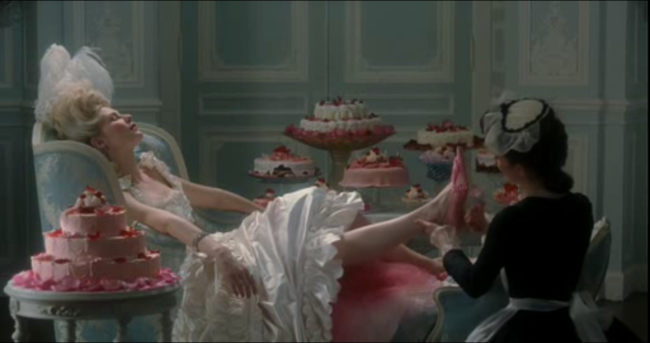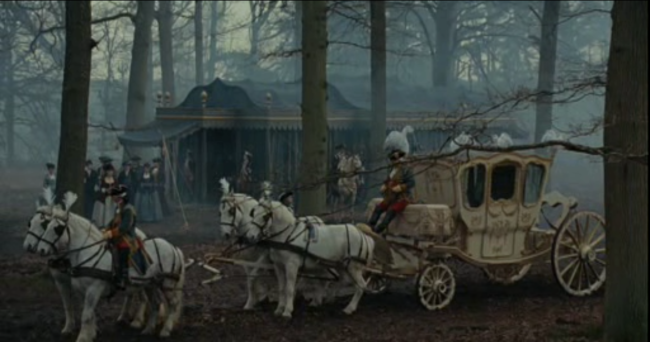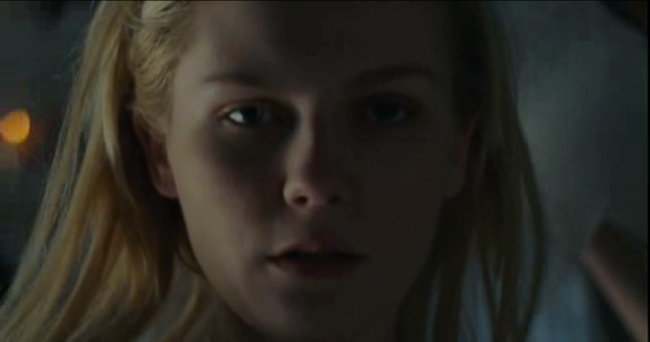 Sofia Coppola is well know for her eye for the aesthetically pleasing in terms of her cinematography – possibly stemming from her experience in painting, modelling, and photography – as well as inconclusive plot lines and struggling young woman in coming-of-age narratives, all which are present in her film starring Kirsten Dunst, Marie Antoinette (2006). Here I attempt to breakdown the cinematography of the hand-over scene, where Marie Antoinette is handed over to the Comptess de Noailles on the Austrian and French border.
Sofia Coppola is well know for her eye for the aesthetically pleasing in terms of her cinematography – possibly stemming from her experience in painting, modelling, and photography – as well as inconclusive plot lines and struggling young woman in coming-of-age narratives, all which are present in her film starring Kirsten Dunst, Marie Antoinette (2006). Here I attempt to breakdown the cinematography of the hand-over scene, where Marie Antoinette is handed over to the Comptess de Noailles on the Austrian and French border.
This still, from the very first shot in the scene, clearly shows overarching sense of otherness and cultural displacement the Marie Antoinette experiences throughout the entire film. The wide shot, though functioning as an establishing shot, also holds apart from the action, forcing us to observe the stillness that surrounds her in this liminal moment in her life. It also highlights the distances between the two countries, as she is strung in her fine-tethered position between them politically, socially and geographically. This sense of otherness is further emphasised by the clear colour distinctions – with Marie Antoinette’s carriage standing out illuminate cream and gold against the fog-shrouded murky blue of the tent – and also the shallow depth of field, which brings the carriage into clear focus, whilst keeping the tent out.
2. This wide shot, accompanying the previous one, emphasises once more the distance between the two parties, which is shown so literally. Physically both parties are removed from one another, and even Marie Antoinette’s party stand far apart from her. The colours yellow and blue, and also black and white, are shown so obviously in contrast, with Marie Antoinette glaring out like a star while the tent and the French people blend into the grey hued green and brown of the trees horizon. This shows the beginning of the social awkwardness and apartness the Marie Antoinette will experience from this moment onwards – begun with an out of place hug to the regal Comptess. Also noticeable is the tent, blending unremarkably into the background, is dark and cavernous within, foreboding that this transition will not be a bright and happy one.
This wide shot, accompanying the previous one, emphasises once more the distance between the two parties, which is shown so literally. Physically both parties are removed from one another, and even Marie Antoinette’s party stand far apart from her. The colours yellow and blue, and also black and white, are shown so obviously in contrast, with Marie Antoinette glaring out like a star while the tent and the French people blend into the grey hued green and brown of the trees horizon. This shows the beginning of the social awkwardness and apartness the Marie Antoinette will experience from this moment onwards – begun with an out of place hug to the regal Comptess. Also noticeable is the tent, blending unremarkably into the background, is dark and cavernous within, foreboding that this transition will not be a bright and happy one.
Beyond the uncomfortable face which so visibly shows her awkwardness in her current position, we also notice emphasised the lighting, which has drastically changed. She is only just within the ominously dark-centred tent, and now she is dimly lit and her dress and hair which we only moments before shining yellow and gold are now murky off-white and dirty blonde, enlightening us to the obvious looming fact that this conversion – from Austrian princess to French Dauphine – will not be easy nor a light-hearted affair. The framing of this shot also shows the impending darkness that she is nearly engulfed by, as she is framed by blackened, light-shrouding curtains on one side and the Comptess – who blends almost entirely into her surroundings. This is the moment where Marie Antoinette commits, and leaves all her known people and pets behind.
The three preceding shots are close-up, which are unlike any of the other shots – before or afterwards – which remain detached and distant in a wide or medium shot. This clearly marks a transition, from the outside of her, to entering the internal struggle that she is now realising she must experiencing – as she is told “It is a custom that the bride retain nothing belonging to a foreign court,” as she is stripped of all the ties her to her former life and emerge from the tent as the Dauphine of France.
Here is the final moment of her transition which we began with her removal of clothing and Austrian entrapments as a string of close-ups which underline her internal turmoil. Now we move outwards and watch from afar to see this wide shot as her final item of clothing is removed and she is left standing naked. This could be symbolic of the accomplishment of acceptance towards her enforced new nationality, but it is clear throughout, and foreboded by the continued enveloping darkness around her and dim lighting upon her, that she is not truly at peace. In light of that, it is hard to miss the vagina shaped light that haloes around her, which itself is surrounded by darkness only further underlining her impending darkness, but also insinuating the idea of the tent as womb, which in the final shot below, marks her emergence from the dark and murky tent as the birth of her as Marie Antoinette, Dauphine of France.







vagina-tent ftw
[…] Otherness in the Hand Over of Marie Antoinette (frombehindthefourthwall.wordpress.com) […]